On April 2…
“Wars generally do not resolve the problems for which they are fought and therefore prove ultimately futile. War is a defeat for humanity.”
~Pope John Paul II
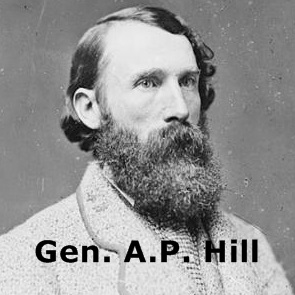
1865 – Following an overwhelming Union victory at the Third Battle of Petersburg, Confederate General Robert E. Lee notified Confederate President Jefferson Davis that his army would be forced to abandon Richmond and Petersburg.
Confederate General A.P. Hill was killed during the battle. Not knowing Lee’s lines had been broken, Hill rode into an party of Union soldiers. They called upon Hill to surrender. The Confederate hero of the Battle of Antietam refused their demands and was shot through the chest by Union Corporal John W. Mauck of the 138th Pennsylvania.
Davis and most of his cabinet immediately began preparations for the Confederate government and all the gold in the Confederate treasury to leave Richmond on a railroad train headed for Danville, VA.
The retreat led to the surrender of the Army of Northern Virginia at Appomattox Court House, Virginia one week later.

1917 – After a series of German submarine attacks on American commercial ships, president Woodrow Wilson asked Congress for a declaration of war against Germany, arguing that Germany was engaged in “nothing less than war against the government and people of the United States.”
He requested a military draft to raise the army, increased taxes to pay for military expenses, loans to Allied governments, and increased industrial and agricultural production.
“We have no selfish ends to serve. We desire no conquest, no dominion… no material compensation for the sacrifices we shall freely make. We are but one of the champions of the rights of mankind. We shall be satisfied when those rights have been made as secure as the faith and freedom of the nations can make them.”
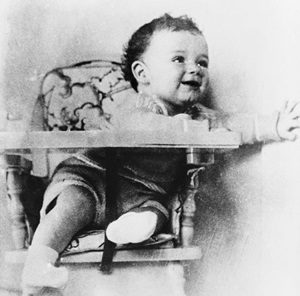
1932 – One month after his 20-month old son had been kidnapped, Charles Lindbergh paid a $50,000 ransom for the child’s return.
The ransom was packaged in a wooden box that was custom-made in the hope that it could later be identified. The ransom money included a number of gold certificates which were about to be withdrawn from circulation. It was hoped this would draw attention to anyone who was spending them. The bills were not marked but their serial numbers were recorded.
Six weeks later, the young child’s body was found.

1956 – As The World Turns premiered on CBS.
Set in the fictional town of Oakdale, Illinois, the soap opera ran for 54 seasons before ending on September 17, 2010.
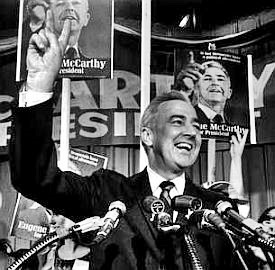
1968 – Three weeks after nearly defeating president Lyndon Johnson in the New Hampshire Democratic primary – and just two days after Johnson shocked the nation by announcing that he would not seek re-election – Sen. Eugene McCarthy (MN) defeated the president by a 56-35 percent margin in the Wisconsin primary.

1968 – 2001: A Space Odyssey premiered at the Uptown Theatre in Washington, DC.
Widely regarded as one of the greatest and most influential films ever made, 2001: A Space Odyssey earned four Academy Award nominations (winning for Best Visual Effects).
HAL (Heuristically programmed ALgorithmic computer) who controlled the systems of the spacecraft and interacted with the ship’s astronaut crew – “Just what do you think you’re doing, Dave?”) was listed as the 13th-greatest film villain in the American Film Institute’s 100 Years…100 Heroes & Villains.
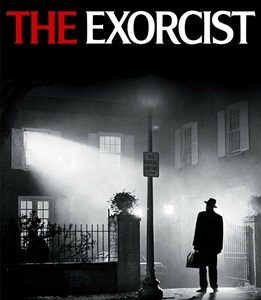
1974 – At the 46th Academy Awards, The Sting won 7 awards, including Best Picture and Best Director for George Roy Hill.
Jack Lemmon won Best Actor (Save The Tiger) and Glenda Jackson won Best Actress (A Touch of Class).
The Exorcist, nominated for ten awards, won only two; Best Screenplay and Best Sound. The film’s producers can take consolation in the fact that a movie produced for $12 million has earned over $450 million.
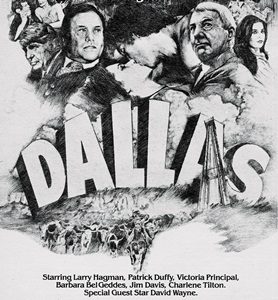
1978 – Dallas premiered as a five-part miniseries on CBS.
Producers initially had no plans for expansion; however, due to the show’s popularity, it was subsequently turned into a regular series and ran for 13 full seasons.

1987 – Buddy Rich, considered one of the most influential drummers of all time, died of respiratory and cardiac failure after treatment for a malignant brain tumor. He was 69.
Often cited as the greatest jazz drummer of all time, a statement that few – including Rich himself – would argue with, he held a low opinion of both country and rock music; during medical therapy before his death, a nurse asked Rich whether he was allergic to anything, to which he replied, “Yes, country and western music.”
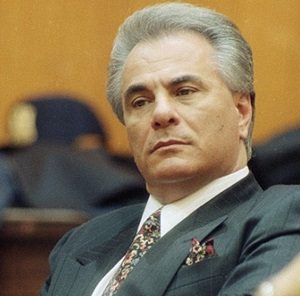
1992 – Mafia boss John Gotti was found guilty of 5 murders (Paul Castellano, Thomas Bilotti, Robert DiBernardo, Liborio Milito and Louis Dibono), plus conspiracy to murder, loansharking, illegal gambling, obstruction of justice, bribery and tax evasion.
On June 23, 1992, Gotti was sentenced to life imprisonment without the possibility of parole. He was incarcerated at the United States Penitentiary at Marion, Illinois.
He died of cancer on June 10, 2002. He was 61.

2005 – Pope John Paul II died from heart failure at the age of 84. Serving over 26 years as head of the Catholic Church, he was the second longest serving pope in modern history.
The Requiem Mass held six days later set world records both for attendance and number of heads of state present at a funeral. Four kings, five queens, at least 70 presidents and prime ministers, and 15 leaders of other religions attended.
It was the largest single pilgrimage of Christianity ever with numbers estimated in excess of four million mourners gathering in and around Vatican City.
Compiled by Ray Lemire ©2019 RayLemire.com / Streamingoldies.com. All Rights Reserved.